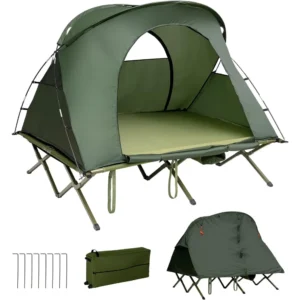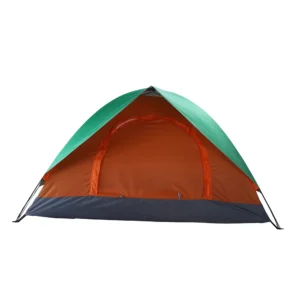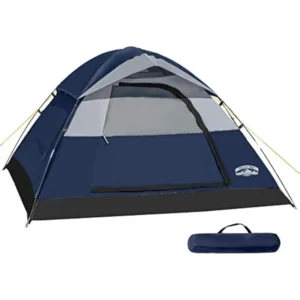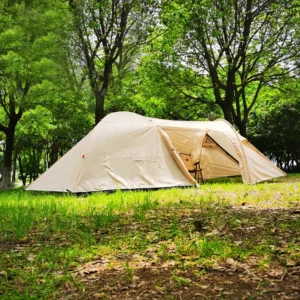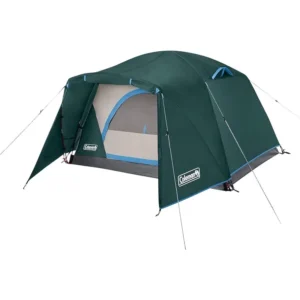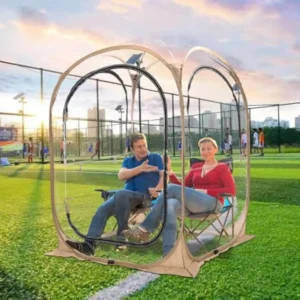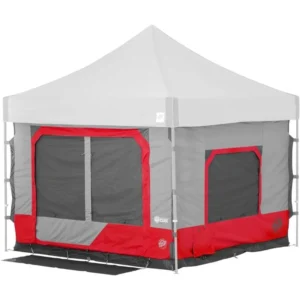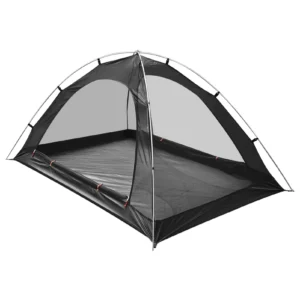Camping Tent with Vestibule
Need extra space and weather protection for your gear? Camping tents with vestibules offer a covered area. This keeps boots dry and your main tent clean.
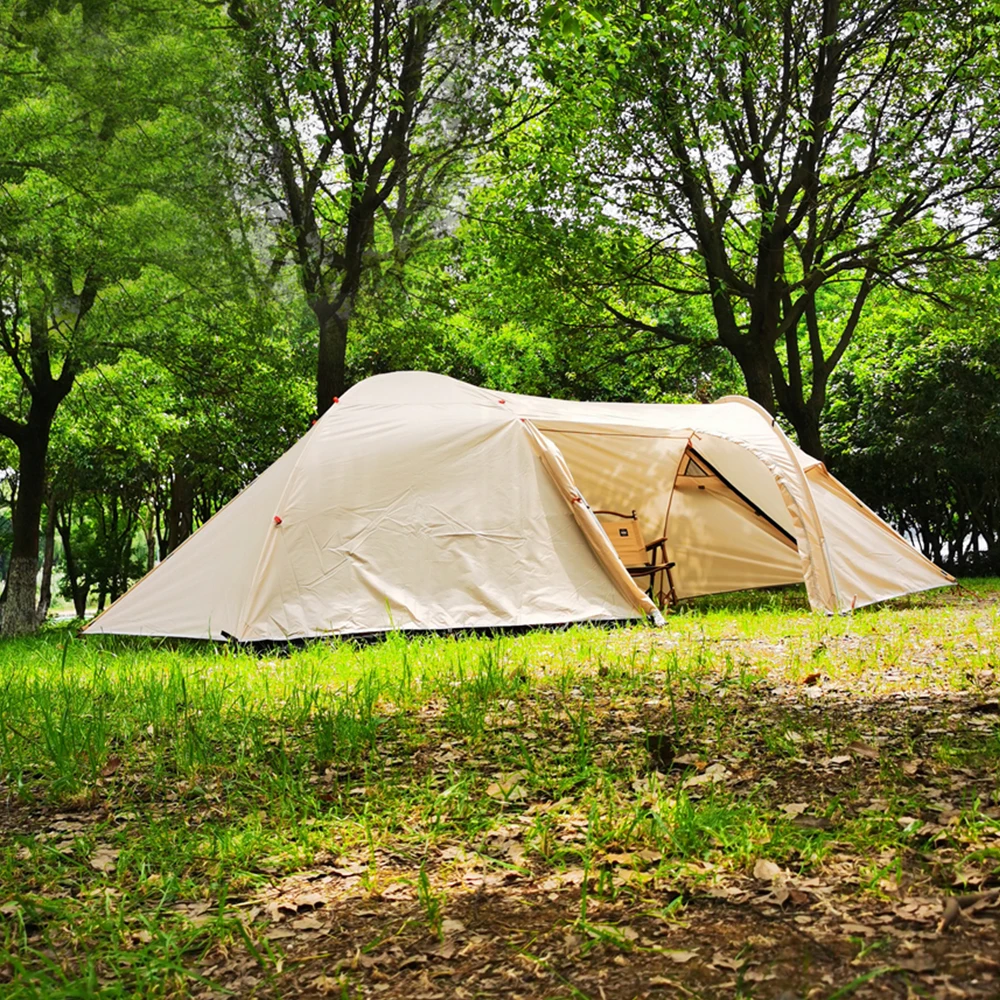
Showing all 5 results
Camping Tent with Vestibule, Easy Setup Camping Tent, Instant Camping Tent
$694.21 Select options This product has multiple variants. The options may be chosen on the product pageCamping Tent with Vestibule, Dome Camping Tent, Waterproof Camping Tent
$188.44 Select options This product has multiple variants. The options may be chosen on the product pageCamping Tent with Vestibule, Waterproof Camping Tent
Price range: $407.89 through $479.48 Select options This product has multiple variants. The options may be chosen on the product pageCamping Tent with Vestibule, Dome Camping Tent, Easy Setup Camping Tent, Waterproof Camping Tent
$344.69 Select options This product has multiple variants. The options may be chosen on the product page
Showing all 5 results
The Essential Benefits of Camping Tents with Vestibules
Vestibules are those extra covered spaces attached to your tent that aren’t part of the sleeping area. For serious campers, they’re not just a nice-to-have feature—they’re essential gear that transforms your camping experience. Think of a vestibule as your tent’s front porch, creating a protected transition zone between the outdoors and your sleeping quarters.
These versatile spaces serve multiple crucial functions that enhance your time in the wilderness. First, they provide dedicated storage for muddy boots, wet raincoats, and bulky backpacks, keeping your sleeping area clean and spacious. Second, they act as a weather buffer, shielding tent entrances from rain and wind while providing extra protection for your gear. Finally, they create usable living space for cooking preparation, gear organization, or simply sitting out of direct sun or rain.
When unexpected mountain storms roll in or you’re managing equipment for a week-long backcountry adventure, you’ll quickly appreciate the thoughtful design of a quality vestibule. Premium versions feature reinforced seams, robust waterproof materials like 70D ripstop nylon, and strategically positioned ventilation to prevent condensation.
At Explore Elements, we’ve tested our waterproof camping tents through desert heat waves and alpine snowstorms, ensuring vestibules that stand up to whatever nature throws your way.
Shop Our Premium Vestibule Tent Collection
Our carefully curated selection of camping tents with vestibules represents the pinnacle of outdoor shelter design. Each model has been rigorously field-tested in extreme conditions—from the rainy Pacific Northwest to the windswept Patagonian plains—ensuring performance when it matters most.
We offer various vestibule configurations to match your specific needs: front vestibules for maximized storage space, side vestibules for easier access, and dual vestibules for superior ventilation and multiple entry points. Our extended vestibule options provide significantly more covered space for base camping or group expeditions.
All our vestibule tents feature premium materials like silicone-coated ripstop nylon, DAC aluminum poles, and taped seams to ensure your gear stays dry in even the harshest conditions.
Find Your Perfect Vestibule Tent
Finding your ideal vestibule tent starts with understanding your specific needs. Use our intuitive filtering system to narrow down options based on:
- Capacity: From intimate 1-2 person shelters to spacious 5+ person family tents
- Activity Type: Specialized designs for backpacking, base camping, or serious expeditions
- Vestibule Configuration: Choose between front, side, dual, or extended vestibule designs
- Weather Protection: Select 3-season versatility or robust 4-season construction with appropriate wind and water resistance ratings
- Price Range: From premium to ultra-premium investment pieces
- Additional Features: Filter by vestibule size, setup time, or packed weight
For weekend warriors exploring local trails, a lightweight 2-person tent with a single front vestibule might be perfect. Expedition leaders heading into challenging terrain might prefer a 4-season tent with dual vestibules and reinforced construction. Whatever your adventure demands, our filtering system helps match the right vestibule configuration to your needs.
Understanding Vestibule Designs & Configurations
Different vestibule designs serve distinct purposes in the backcountry:
Front Vestibules typically offer the most storage space (6-10 square feet) and excel at keeping the elements away from your tent entrance. They’re ideal for managing gear in poor weather but provide just one access point.
Side Vestibules allow for easier entry and exit without disturbing gear storage. They’re particularly valuable for multi-person tents where campers may keep their individual equipment organized on their respective sides.
Dual Vestibules provide two protected storage areas, usually positioned at opposite ends of the tent. This design excels at creating cross-ventilation and offers multiple access points—a significant advantage for shared tents. Each person can maintain their own organized space without crawling over companions.
Extended Vestibules feature enlarged covered areas that can serve as sheltered cooking spaces or mini living rooms. Some premium designs offer 15-20 square feet of additional protected space—almost doubling your usable tent area.
The best vestibules maintain a favorable vestibule-to-tent ratio, typically around 1:2 for balanced performance. This ensures adequate protected space without adding excessive weight or bulk.
Maximizing Your Vestibule Space: Expert Tips
Make the most of your vestibule with these field-tested techniques:
- Create vertical storage by using gear loops to hang lightweight items from vestibule ceilings
- Establish zones within your vestibule—dirty items near the entrance, clean/dry gear closer to the tent door
- Use stuff sacks as organizers rather than emptying gear directly onto the vestibule floor
- Manage moisture by keeping wet items toward the outer edges where ventilation is better
- Prevent condensation by leaving a small ventilation gap at the bottom of the vestibule, especially in humid conditions
- Use a small footprint or ground cloth under the vestibule area in wet conditions to prevent mud splatter
- Create drainage channels around the vestibule perimeter when camping in rainy conditions
Remember that proper vestibule organization isn’t just about convenience—it helps protect your vital equipment and maintains the waterproof integrity of your shelter system.
Vestibules for Different Camping Styles
Your camping style should determine your vestibule selection:
Backpackers seeking to minimize weight should look for backpacking tents with vestibules that offer streamlined designs with just enough space for essential gear protection. Look for models where vestibules add no more than 8-12 oz (225-340 g) while providing 4-6 square feet of protected space.
Base Campers benefit from extended vestibules that create sheltered outdoor living spaces. Premium options include oversized front vestibules with multiple configuration options that can adapt to changing weather conditions.
Expedition & Mountaineering enthusiasts need vestibules engineered for extreme conditions. Winter camping tents feature reinforced vestibule structures that can withstand snow loading, while specialized ventilation prevents dangerous condensation at high altitudes.
Family Campers should prioritize multi-zone vestibules with designated areas for dirty gear, cooking equipment, and outdoor footwear. Look for models with higher ceiling heights and multiple access points to accommodate increased traffic.
Materials & Construction: What Makes a Superior Vestibule
Premium vestibules distinguish themselves through:
Advanced Fabrics: High-performance vestibules use 30-70D ripstop nylon with silicone coatings that provide superior tear strength and water resistance compared to standard polyester. The best waterproof backpacking tents feature vestibules with waterproof ratings of 1,500-2,000mm hydrostatic head.
Structural Integrity: Quality vestibules incorporate additional guy-out points and reinforced stake loops that maintain tension in high winds. Look for designs with at least 2-4 connection points to prevent sagging when wet.
Ventilation Design: Superior vestibules balance weather protection with airflow through strategically placed vents, preventing condensation without compromising shelter. This is especially important in humid or cold conditions where moisture management becomes critical.
Seamless Integration: Rather than feeling like an afterthought, premium vestibules flow naturally from the main tent body with complementary pole structures and tension systems that work together under stress.
Frequently Asked Questions About Tent Vestibules
Can I cook in a tent vestibule?
While vestibules provide some protection for food preparation, cooking with fuel stoves presents serious carbon monoxide and fire risks. If absolutely necessary in extreme conditions, ensure maximum ventilation and use extreme caution.
How much extra weight does a vestibule add?
Typically between 6-20 oz (170-570 g) depending on size and materials, with ultralight models on the lower end and extended vestibules on the higher end.
Are vestibules waterproof or just water-resistant?
Quality vestibules are fully waterproof, with materials rated at 1,200-2,000mm hydrostatic head minimum for reliable performance.
Can vestibules be detached from the main tent?
Some premium models feature modular designs with removable vestibules, offering flexibility for different conditions. These designs typically add 2-4 oz (55-115 g) of weight due to additional connection points.
How do I prevent condensation in my vestibule?
Maintain airflow by leaving small gaps at ground level, use available vents, and avoid storing extremely wet items inside when possible.
What’s the difference between a vestibule and an awning?
Vestibules typically enclose space on multiple sides with ground coverage, while awnings provide overhead-only protection with open sides.
Essential Accessories & Related Equipment
Enhance your vestibule functionality with these complementary products:
- Custom-fit groundsheets that extend protection to your vestibule floor without collecting water
- Hanging gear lofts and pockets specifically sized for vestibule dimensions
- Extra-long stakes (8-10 inches) for securing vestibules in soft ground
- Reflective guylines for improved night visibility around vestibule areas
- Battery-powered LED string lights to illuminate vestibule spaces
For specialized camping experiences, explore our collections of ultralight backpacking tents when weight is critical, or freestanding backpacking tents for maximum setup flexibility on varied terrain.

